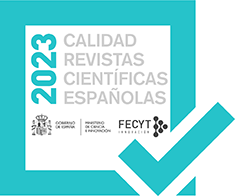Título: “La Inteligencia Artificial como agente contaminante: concepto jurídico, impacto ambiental y futura regulación”
Title: “Artificial Intelligence as a pollutant: legal concept, environmental impact and future regulation”
Autor: David Edgar Araiz Huarte, contratado predoctoral en Universidad Pública de Navarra (España).
Fecha de recepción: 25/10/2022
Fecha de aceptación: 09/12/2022
Fecha de modificación: 10/01/2023
DOI: https://doi.org/10.56398/ajacieda.00071
Resumen:
La inteligencia artificial está suscitando intensos debates en el conjunto de la doctrina sobre su compatibilidad con la ética humanista imperante en la sociedad occidental. Esta perspectiva antropocéntrica del cambio de paradigma planteado por la inteligencia artificial no agota sin embargo la hilera de consecuencias perniciosas que la misma puede acompañar. Así pues, el medio ambiente también se erige como un bien jurídico a proteger frente al fenómeno de esta nueva tecnología. La ingente cantidad de energía demandada por algunos de los modelos de inteligencia artificial erosiona de raíz cualquier objetivo de eficiencia energética que pueda llegar a plantearse en el campo de las TIC. Por ello, el objetivo de este trabajo será el consistente en analizar este nuevo reto al que deberá enfrentarse, más pronto que tarde, el Derecho ambiental.
Abstract:
Artificial intelligence is giving rise to intense debates in the doctrine about its compatibility with the humanist ethics prevailing in Western society. This anthropocentric perspective of the paradigm shift posed by artificial intelligence does not, however, exhaust the line of pernicious consequences that may accompany it. Thus, the environment also emerges as a legal asset to be protected against the phenomenon of this new technology. The enormous amount of energy demanded by some of the artificial intelligence models erodes any energy efficiency objectives that may be set in the field of ICTs. For this reason, the aim of this paper will be to analyze this new challenge that environmental law will have to face sooner rather than later.
Palabras clave: Inteligencia artificial. Medio ambiente. Energía.
Keywords: Artificial intelligence. Environment. Energy.
Índice:
1. Planteamiento General
2. Definición de inteligencia artificial y de sus elementos integradores
2.1. Concepto de inteligencia artificial
2.1.1. Construcción jurídica de la definición de inteligencia artificial
2.1.2. La tecnología de machine learning
2.1.3. Exteriorización de los sistemas de inteligencia artificial
2.2. Los elementos constitutivos de los sistemas IA: algoritmos y datos
3. La peligrosidad de los sistemas IA para el medio ambiente
3.1. Introducción
3.2. Desarrollo y entrenamiento de los sistemas IA
3.3. El uso de los sistemas IA
3.4. Infraestructuras de datos: los centros de datos y las redes de transmisión
4. Hacia una positivización del impacto ambiental de la IA: primeros documentos de programación y planificación
4.1. Introducción
4.2. Panorama internacional
4.2.1. Recomendación de la UNESCO sobre la Ética de la Inteligencia Artificial
4.2.2. Otras iniciativas internacionales
4.3. La planificación de la IA en la Unión Europea
4.3.1. Comunicaciones de la Comisión Europea
4.3.2. Especial mención a la propuesta de Reglamento europeo sobre IA
4.4. Recepción de la dimensión ambiental de la IA en el Derecho español
4.4.1. Estrategia Nacional de Inteligencia Artificial y la Carta de Derechos Digitales
4.4.2. Artículo 6 de la Ley 7/2021, de 20 de mayo, de cambio climático y transición energética
4.4.3. El Programa Nacional de Algoritmos Verdes
5.Consideraciones de lege ferenda en torno al impacto ambiental de la IA
5.1. Introducción
5.2. ¿Es aplicable la Directiva 2009/125 de diseño ecológico?
5.3. Propuesta de requisitos ambientales ex ante para la introducción de un sistema IA en el mercado
5.3.1. Normas jurídicamente vinculantes
5.3.2. Incentivos económicos
6. Conclusiones
7. Bibliografía
Index:
1. General approach
2. Definition of artificial intelligence and its integrating elements
2.1. Concept of artificial intelligence
2.1.1. Legal construction of the definition of artificial intelligence
2.1.2. Machine learning technology
2.1.3. Externalisation of artificial intelligence systems
2.2. The building blocks of AI systems: algorithms and data
3. The danger of AI systems for the environment
3.1. Introduction
3.2. Development and training of AI systems
3.3. The use of AI systems
3.4. Data infrastructures: data centres and transmission networks
4. Towards a positivisation of the environmental impact of AI: first planning documents
4.1. Introduction
4.2. International overview
4.2.1. UNESCO Recommendation on the Ethics of Artificial Intelligence
4.2.2. Other international initiatives
4.3. AI planning in the European Union
4.3.1. Communications from the European Commission
4.3.2. Special mention of the proposal for a European Regulation on AI
4.4. Reception of the environmental dimension of AI in Spanish law
4.4.1. National Artificial Intelligence Strategy and the Digital Bill of Rights
4.4.2. Article 6 of Law 7/2021 of 20 May on Climate Change and Energy Transition
4.4.3. The National Green Algorithms Program
5. Lege ferenda considerations on the environmental impact of AI
5.1. Introduction
5.2. Does the Eco-design Directive 2009/125 apply?
5.3. Proposal for ex ante environmental requirements for the introduction of an IA system on the market
5.3.1. Legally binding rules
5.3.2. Economic incentives
6. Conclusions
7. Bibliography
Documento completo: “La Inteligencia Artificial como agente contaminante: concepto jurídico, impacto ambiental y futura regulación”.



